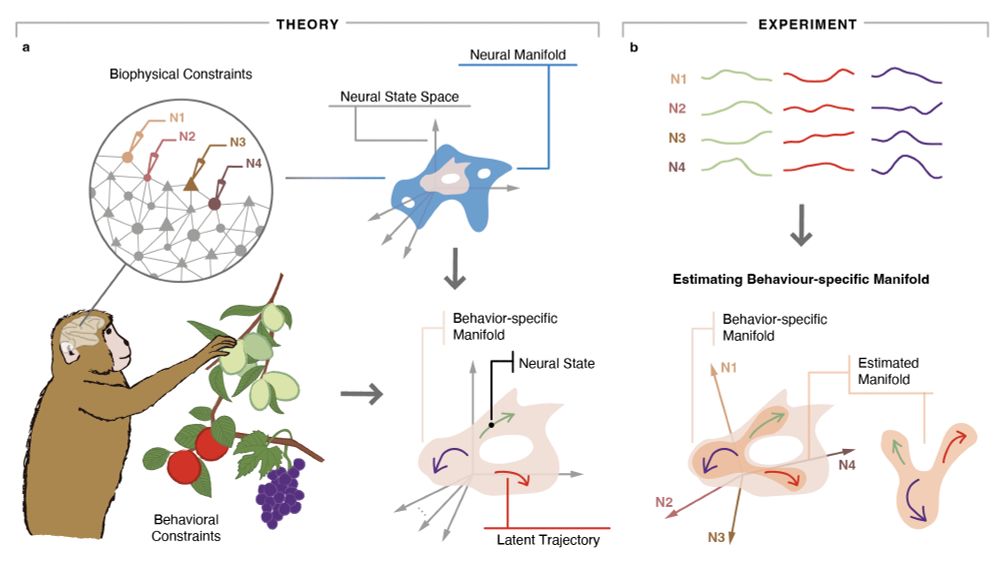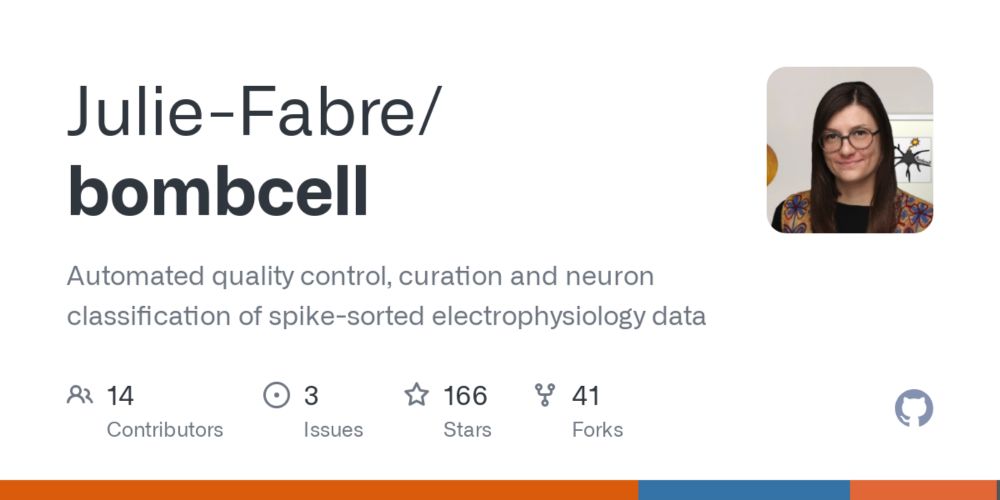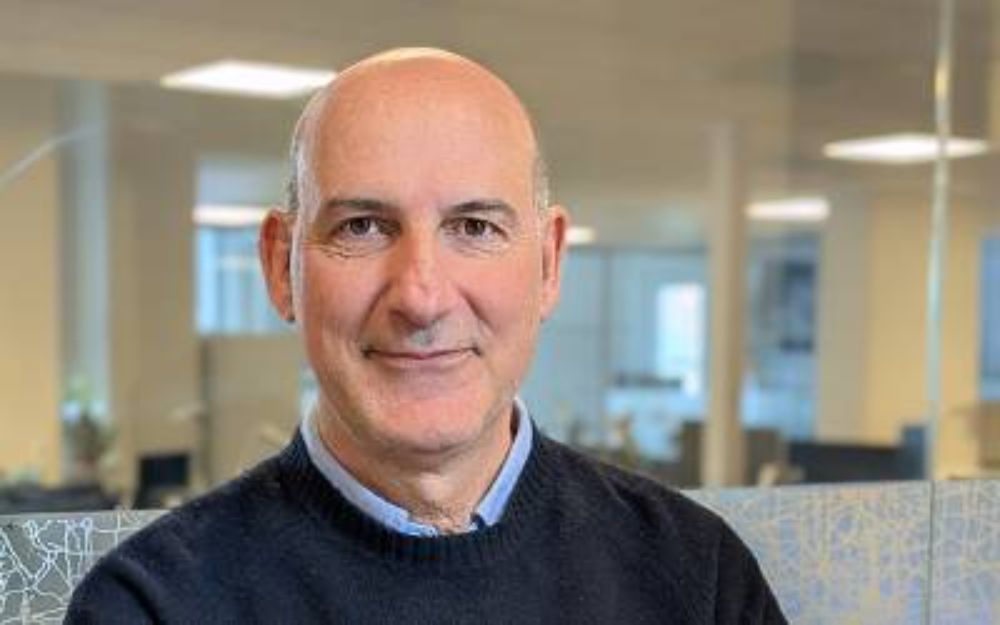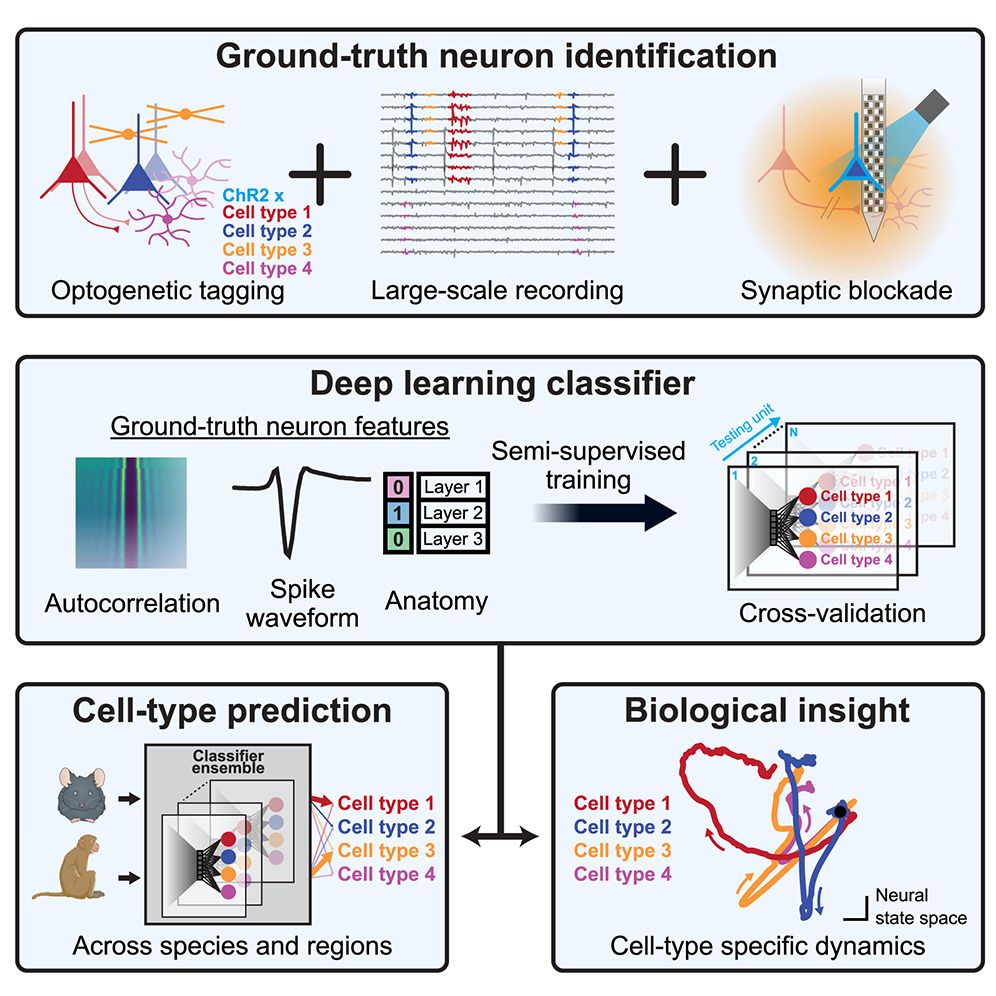https://tinyurl.com/yrxws43r

Feeling very grateful that reviewers and chairs appreciated concise mathematical explanations, in this age of big models.
www.biorxiv.org/content/10.1...
1/2
www.biorxiv.org/content/10.1...

www.biorxiv.org/content/10.1...
RNNs are often used to explore how the brain may solve specific tasks. We show that, depending on the architecture, RNNs find distinct circuit solutions, behaving differently when exposed to novel stimuli.
www.nature.com/articles/s42...

RNNs are often used to explore how the brain may solve specific tasks. We show that, depending on the architecture, RNNs find distinct circuit solutions, behaving differently when exposed to novel stimuli.
www.nature.com/articles/s42...
www.maths.ox.ac.uk/node/74242
I'll be talking about the "universality" of spatially extended mean-field PDEs (see 🧵⬇️)
www.maths.ox.ac.uk/node/74242
I'll be talking about the "universality" of spatially extended mean-field PDEs (see 🧵⬇️)
www.nature.com/articles/s41...

www.nature.com/articles/s41...
We study how humans explore a 61-state environment with a stochastic region that mimics a “noisy-TV.”
Results: Participants keep exploring the stochastic part even when it’s unhelpful, and novelty-seeking best explains this behavior.
#cogsci #neuroskyence


We study how humans explore a 61-state environment with a stochastic region that mimics a “noisy-TV.”
Results: Participants keep exploring the stochastic part even when it’s unhelpful, and novelty-seeking best explains this behavior.
#cogsci #neuroskyence
Feeling very grateful that reviewers and chairs appreciated concise mathematical explanations, in this age of big models.
www.biorxiv.org/content/10.1...
1/2

Feeling very grateful that reviewers and chairs appreciated concise mathematical explanations, in this age of big models.
www.biorxiv.org/content/10.1...
1/2
forms.cloud.microsoft/e/XkZLavhaJe
More info at snufa.net/2025/
Note that we normally get around 700 participants and recordings go on YouTube and get 100s-1000s views.
Please repost.
forms.cloud.microsoft/e/XkZLavhaJe
More info at snufa.net/2025/
Note that we normally get around 700 participants and recordings go on YouTube and get 100s-1000s views.
Please repost.
its.westlake.edu.cn/info/1017/28...

its.westlake.edu.cn/info/1017/28...
We show how to exactly map recurrent spiking networks into recurrent rate networks, with the same number of neurons. No temporal or spatial averaging needed!
Presented at Gatsby Neural Dynamics Workshop, London.

We show how to exactly map recurrent spiking networks into recurrent rate networks, with the same number of neurons. No temporal or spatial averaging needed!
Presented at Gatsby Neural Dynamics Workshop, London.
Neural manifolds went from a niche-y word to an ubiquitous term in systems neuro thanks to many interesting findings across fields. But like with any emerging term, people use it very differently.
Here, we clarify our take on the term, and review key findings & challenges rdcu.be/ex8hW

Neural manifolds went from a niche-y word to an ubiquitous term in systems neuro thanks to many interesting findings across fields. But like with any emerging term, people use it very differently.
Here, we clarify our take on the term, and review key findings & challenges rdcu.be/ex8hW
Activity is dominated by vision (or spontaneous fluctuations) in L2/3 and by movement in L5. This leads to different geometries.
www.biorxiv.org/content/10.1...

Brainwide blood volume reflects opposing neural populations
Brainwide fluctuations in blood volume arise from two populations with opposite relation to brain state and distinct relationships to blood supply
www.biorxiv.org/content/10.1...
Brainwide blood volume reflects opposing neural populations
Brainwide fluctuations in blood volume arise from two populations with opposite relation to brain state and distinct relationships to blood supply
www.biorxiv.org/content/10.1...
www.nature.com/articles/s41...

www.nature.com/articles/s41...
www.biorxiv.org/content/10.1...
www.biorxiv.org/content/10.1...
pip install and play around with our toy dataset:
🔗 github.com/Julie-Fabre/...

pip install and play around with our toy dataset:
🔗 github.com/Julie-Fabre/...
How to analyse a *high-dimensional* dynamical system? Find its fixed points, study their properties!
We do that for a chaotic neural network! finally published: doi.org/10.1103/Phys...

'Modeling in Neurosciences and Cognition'
math.univ-cotedazur.fr/laboratoire/...
'Mathematics of Life"
math.univ-cotedazur.fr/laboratoire/...
'Modeling in Neurosciences and Cognition'
math.univ-cotedazur.fr/laboratoire/...
'Mathematics of Life"
math.univ-cotedazur.fr/laboratoire/...

Suite3D: Volumetric cell detection for two-photon microscopy
by @haydari.bsky.social & team.
www.biorxiv.org/content/10.1...

Suite3D: Volumetric cell detection for two-photon microscopy
by @haydari.bsky.social & team.
www.biorxiv.org/content/10.1...

bioRxiv: www.biorxiv.org/content/10.1...

bioRxiv: www.biorxiv.org/content/10.1...


